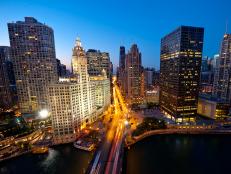Midwest Sites to Explore Black History and Learn About the Great Migration
More than 6 million African Americans migrated north from World War I through the 60s. It enriched the Midwest with artists, musicians, athletes, scientists and activists whose feats and talents ripple into the 21st century. Check out some top spots to celebrate and learn about this important part of American history.
Shop This Look
Detroit, Mich.
As an international crossing spot for the Underground Railroad and as a pivotal destination during The Great Migration for factory and auto industry jobs, Detroit’s black heritage runs deep. Check out "And Still We Rise," the largest single African-American exhibit and an anchor for the Charles H. Wright Museum of African American History in Midtown Detroit. The museum’s more than 35,000 artifacts include Underground Railroad and Harriet Tubman collections and extensive documents on Detroit’s labor movement.
Also carve out time for a musical nostalgia trip with lively guided tours through the modest home-turned-recording-studio where Barry Gordy began Motown Records, grooming young musicians and singers such as Michael Jackson and Diana Ross before launching them into superstardom.
